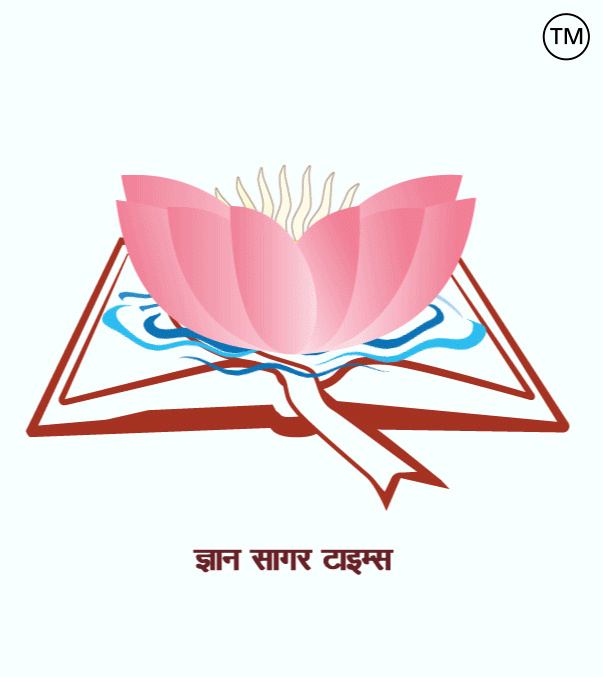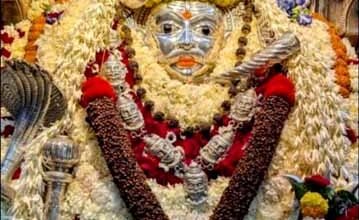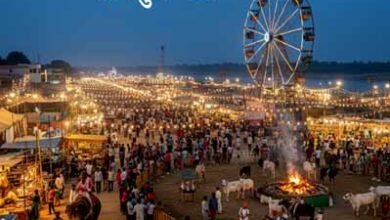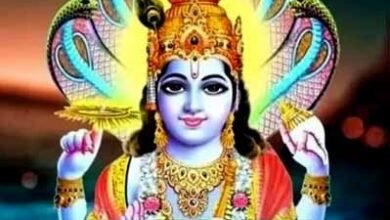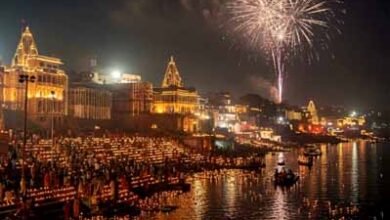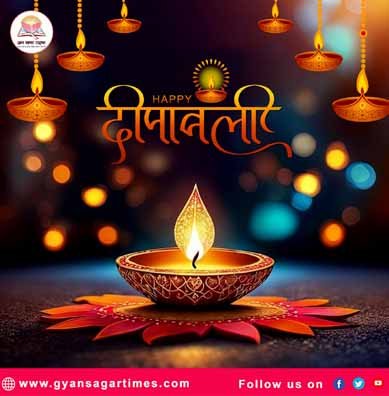
दीपोत्सव…
“असतो मा सद्गमय, तमसो मा ज्योतिर्गमय”
भारत ही नहीं पुरे विश्व में दीपावली का पर्व धूमधाम से मनाया जाता है. दीपावली शब्द की उत्पत्ति संस्कृत के दो शब्दों से मिलकर बना है, “दीप” का अर्थ होता है “दिया” और “आवली” का अर्थ होता है “ लाइन, श्रृंखला या पंक्ति. भारत में प्राचीन काल से दीपावली को हिंदू कैलेंडर के कार्तिक माह में गर्मी की फसल के बाद एक त्योहार के रूप में मनाया जाता है. पद्म और स्कन्द पुराण में भी दीपावली का उल्लेख मिलता है. स्कन्द पुराण के अनुसार दीपक (दिया) को सूर्य के हिस्सों का प्रतिनिधित्व करने वाला माना गया है, सूर्य जो जीवन के लिए प्रकाश और ऊर्जा का श्रोत माना गया है और हिन्दू कैलंडर के अनुसार कार्तिक महीने में अपनी जगह बदलता है.
पहली सहस्त्राब्दी ईसा पूर्व उपनिषद के अनुसार दीपावली को यम और नचिकेता की कहानी का वर्णन मिलता है.7वीं शताब्दी के संस्कृत नाटक नाग्नंद में राजा हर्ष ने इसे “दीपप्रतिपादुत्सव:” भी कहा है, जिसमें दिये जलाये जाते थे और नव दुल्हन और दूल्हे को तोहफे भी दिए जाते थे. 9वीं शताब्दी में राजशेखर ने “काव्यमीमांसा” में इसे “दीपमालिका” कहा है, जिसमें घरों की पुताई की जाती थी और तेल के दीयों से रात में घरों, सड़कों और बाजारों को सजाया जाता था जबकि, फ़ारसी यात्री और इतिहासकार अल बेरुनी ने भारत आने पर अपने 11वीं सदी के संस्मरण में, दीपावली को कार्तिक महीने में नये चंद्रमा के दिन पर हिंदुओं द्वारा मनाया जाने वाला त्यौहार भी कहा है.
हिंदू दर्शन में योग और वेद के अनुसार इस भौतिक शरीर और मन से परे इस जहां में जो कुछ है वो शुद्ध अनंत, और शाश्वत है जिसे आत्मा कहा जाता है. दीपावाली, आध्यात्मिक अंधकार पर आंतरिक प्रकाश, अज्ञान पर ज्ञान, असत्य पर सत्य और बुराई पर अच्छाई का उत्सव (पर्व) कहा जाता है. यूँ तो दीपावली या दिवाली को रौशनी का त्यौहार कहा जाता है. भारतवर्ष में मनाये जाने वाले सभी त्योहारों में दीपावली का सामजिक, धार्मिक और आर्थिक महत्व होता है.
भारत के कई भागों में इसे दीपोत्सव भी कहते हैं. “तमसो मा ज्योतिर्गमय” का अर्थ होता है ‘अंधेरे से ज्योति अर्थात प्रकाश की ओर जाइए’ का वर्णन उपनिषद में मिलता है. बताते चले कई, जैन धर्म के लोग दीपावली के दिन भगवान महावीर के मोक्ष दिवस के रूप में मनाते हैं, जबकि सिख धर्म को मानने वाले इसे “बंदी छोर दिवस” के रूप में मनाते हैं. भारत के कुछ स्थानों में माँ लक्ष्मी के स्थान पर माँ काली की आराधना करते है और इस त्योहार को काली पूजा भी कहते हैं, लेकिन मथुरा व वृंदावन में भगवान कृष्ण की आराधना होती है और उन्हें 56 या 108 प्रकार के विभिन्न व्यंजनों का भोग लगाया जाता है, साथ ही अयोध्या में दीपावली के दिन भगवान राम की पूजा की जाती है और उन्हें दूध से निर्मित पदार्थों का ही भोग लगाया जाता है.
भारत के पश्चिम और उत्तरी भागों में दीपावली का त्योहार नये हिन्दू वर्ष की शुरुआत का प्रतीक भी माना जाता हैं. दीपावली का पांच दिवसीय महोत्सव देवताओं और राक्षसों द्वारा दूध के सागर के मंथन से पैदा हुई लक्ष्मी के जन्म दिवस के रूप में मनाया जाता है. भगवान विष्णु ने दीपावली की रात्री को ही माँ लक्ष्मी से शादी की थी, वहीं कुछ लोगों का मानना है कि दीपावली के दिन ही भगवान विष्णु वैकुंठ लौटे थे. मान्यता है कि, इस दिन माँ लक्ष्मी प्रसन्न रहती हैं और जो मनुष्य उनकी पूजा करते हैं वो, अगले वर्ष के दौरान मानसिक व शारीरिक दुखों से दूर होकर सुखी जीवन व्यतीत करते हैं. प्राचीन हिन्दू धर्म ग्रंथ रामायण के अनुसार भगवान राम के चौदह सालों के वनवास के उपरान्त अयोध्या लौटने के उपलक्ष्य में मनाते हैं वहीं, महाभारत के अनुसार तेरह वर्षों के वनवास के बाद पांडवों के वापसी के उपलक्ष्य में मनाया जाता है.
पंजाब में जन्मे स्वामी रामतीर्थ का जन्म और महाप्रयाण दोनों ही दीपावली के दिन हुआ था, उन्होंने गंगातट पर स्नान करते समय ‘ओम’ कहते हुए समाधि ले ली थी, वहीं महर्षि दयानंद जो आर्य समाज की स्थापना की थी उन्होंने भी दीपावली के दिन ही अजमेर के निकट अवसान लिया था. कहा जाता है कि,मुगल सम्राट अकबर के शासनकाल में 40 गज ऊँचे बाँस पर एक बड़ा आकाशदीप दीपावली के दिन लटकाया जाता था, वहीं बादशाह जहाँगीर और मुगलवंश के अंतिम सम्राट बहादुर शाह जफर भी बड़े धूमधाम से दीपावली का पर्व मनाते थे. शाह आलम द्वितीय के समय में शाही महलों को दीपों से सजाया जाता था और लालकिले में कार्यक्रम आयोजित होते थे जिसमे हिन्दू-मुसलमान दोनों मिलकर इस उत्सव को मनाते थे.
दीपों का पर्व दीपावली पांच पर्व मिलकर बना है, और इस पर्व को आर्थिक पर्व भी कहते हैं. इस पर्व में प्राय: हिन्दू नए कपड़े, घर के सामान, उपहार, सोने या अन्य बड़ी खरीददारी करते हैं. चुकिं, इस त्योहार पर खर्च और खरीद को ही शुभ माना जाता है, क्योंकि लक्ष्मी को, धन, समृद्धि, और निवेश की देवी भी कहा जाता है. हर साल दीपावली के दौरान हज़ारों करोड़ रुपए के पटाखों की खपत होती है. भारत के अलावा विदेशों में भी लोग अपने-अपने तरीकों से दीपोत्सव का पर्व मनाते हैं.
अंधकार पर प्रकाश की विजय का यह पर्व समाज में उल्लास, भाई-चारे व प्रेम का संदेश देता है, हर प्रांत या क्षेत्र में दीपावली मनाने के कारण एवं तरीके अलग हैं पर सभी जगह कई पीढ़ियों से यह त्योहार चला आ रहा है. आम-आवाम में दीपावली की बहुत उमंग होती है लोग अपने घरों का कोना-कोना साफ़ करते हैं, नये कपड़े पहनते हैं व माँ लक्ष्मी या माँ काली की पूजा-आराधना करते हैं और एक-दुसरे को मिठाइयां या उपहार देते हैं. घर-घर में सुन्दर रंगोली बनायी जाती है, दिये जलाए जाते हैं और आतिशबाजी की जाती है और हर उम्र के लोग इस त्योहार में भाग लेते हैं.
=================== =================== =======
Festival of lights…
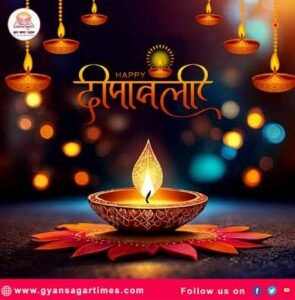
“Aston Ma Sadgamaya, Tamaso Ma Jyotirgamaya”
The festival of Diwali is celebrated with great pomp not only in India but all over the world. The word Diwali is derived from two Sanskrit words: “deep” meaning “lamp” and “avali” meaning “line, series, or row.” Since ancient times, Diwali has been celebrated in India as a festival following the summer harvest in the Hindu calendar’s Kartik month. Diwali is also mentioned in the Padma Purana and Skanda Puranas. According to the Skanda Purana, lamps (diyas) are considered to represent parts of the Sun, the source of light and energy for life, which changes its position during the Hindu calendar’s Kartik month.
In the Upanishads of the first millennium BCE, Diwali is described in the story of Yama and Nachiketa. In the 7th-century Sanskrit play Nagnanda, King Harsha also referred to it as “Deeppratipadutsavah,” where lamps were lit and gifts were given to the bride and groom. In the 9th century, Rajasekhara, in his “Kaviamimansa,” referred to it as “Deepmalika,” where houses were whitewashed and oil was poured on them. Homes, streets, and markets were decorated at night with diyas. The Persian traveler and historian Al-Biruni, in his 11th-century memoirs on his visit to India, also described Diwali as a festival celebrated by Hindus on the new moon day in the month of Kartika.
According to Yoga and Vedas in Hindu philosophy, everything in this universe, beyond the physical body and mind, is pure, infinite, and eternal, called the soul. Diwali is said to be the festival of inner light over spiritual darkness, knowledge over ignorance, truth over falsehood, and good over evil. Deepawali or Diwali is generally considered the festival of lights. Among all the festivals celebrated in India, Diwali holds social, religious, and economic significance.
In many parts of India, it is also called Deepotsav. The phrase “Tamaso ma Jyotirgamaya,” meaning “go from darkness to light,” is found in the Upanishads. Jains also celebrate Diwali as the day of Lord Mahavira’s salvation. While Sikhs celebrate it as “Bandi Chhor Divas.” In some parts of India, Goddess Kali is worshipped instead of Goddess Lakshmi, and the festival is also called Kali Puja. However, in Mathura and Vrindavan, Lord Krishna is worshipped and offered 56 or 108 different dishes. In Ayodhya, Lord Rama is worshipped on Diwali and offered only milk-based offerings.
In the western and northern parts of India, the festival of Diwali also marks the beginning of the new Hindu year. The five-day festival of Diwali is celebrated as the birthday of Lakshmi, born from the churning of the ocean of milk by gods and demons. Lord Vishnu married Goddess Lakshmi on the night of Diwali, while some believe that Lord Vishnu returned to Vaikuntha on Diwali. It is believed that Goddess Lakshmi is pleased on this day, and those who worship her are blessed with a happy life, free from mental and physical suffering, for the next year. According to the ancient Hindu religious text, the Ramayana, the fourteen births of Lord Rama It is celebrated to commemorate the return of the Pandavas to Ayodhya after years of exile. According to the Mahabharata, Diwali is celebrated to mark the return of the Pandavas after thirteen years of exile.
Born in Punjab, Swami Ramtirtha’s birth and death both took place on Diwali. He attained Samadhi while bathing on the banks of the Ganges, chanting “Om.” Maharishi Dayanand, who founded the Arya Samaj, also passed away near Ajmer on Diwali. It is said that during the reign of Mughal Emperor Akbar, a large sky lamp was hung on a 40-yard-high bamboo on Diwali. Emperor Jahangir and the last Mughal emperor, Bahadur Shah Zafar, also celebrated Diwali with great pomp. During the reign of Shah Alam II, royal palaces were decorated with lamps, and events were held at the Red Fort, where both Hindus and Muslims celebrated together.
Diwali, the festival of lights, is made up of five festivals and is also known as the Economic Festival. Hindus often celebrate this festival with new offerings. People make large purchases of clothes, household items, gifts, gold, or other items. This festival is considered auspicious, as spending and purchasing is also considered auspicious, as Lakshmi is also known as the goddess of wealth, prosperity, and investment. Thousands of crores of rupees worth of firecrackers are consumed every year during Diwali. People in India and abroad also celebrate the festival of lights in their own ways.
This festival, symbolizing the triumph of light over darkness, brings joy, brotherhood, and love to society. The reasons and methods for celebrating Diwali vary in each region, but the festival has been celebrated everywhere for generations. Diwali is celebrated with great enthusiasm among the general public. People clean every corner of their homes, wear new clothes, worship Goddess Lakshmi or Goddess Kali, and exchange sweets or gifts. Beautiful rangolis are drawn in every home, lamps are lit, and fireworks are set off. People of all ages.

